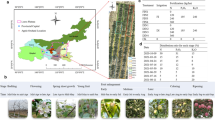Abstract
Exported fresh intact pineapples must fulfill the minimum internal quality requirement of 12 degree brix. Even though near-infrared (NIR) spectroscopic approaches are promising to non-destructively and rapidly assess the internal quality of intact pineapples, these approaches involve expensive and complex NIR spectroscopic instrumentation. Thus, this research evaluates the performance of a proposed pre-dispersive NIR light sensing approach in non-destructively classifying the Brix of pineapples using K-fold cross-validation, holdout validation, and sensitive analysis. First, the proposed pre-dispersive NIR sensing device that consisted of a light sensing element and five NIR light emitting diodes with peak wavelengths of 780, 850, 870, 910, and 940 nm, respectively, was developed. After that, the diffuse reflectance NIR light of intact pineapples was non-destructively acquired using the developed NIR sensing device before their Brix values were conventionally measured using a digital refractometer. Next, an artificial neural network (ANN) was trained and optimized to classify the Brix values of pineapples using the acquired NIR light. The results of the sensitivity analysis showed that either one wavelength that was near to the water absorbance or chlorophyll band was redundant in the classification. The performance of the trained ANN was tested using new pineapples with the optimal classification accuracy of 80.56%. This indicates that the proposed pre-dispersive NIR light sensing approach coupled with the ANN is promising to be an alternative to non-destructively classifying the internal quality of fruits.




Similar content being viewed by others
References
Abu-Khalaf N, Taste E, Fruits OF, Vegetables Using Near (2001) Sensing taste of fruits and vegetables using near infrared (nir) technology. Technology. The Royal Veterinary and Agricultural University (KVL)
Behroozi-Khazaei N, Nasirahmadi A (2017) A neural network based model to analyze rice parboiling process with small dataset. J Food Sci Technol 54(8):2562–2569. https://doi.org/10.1007/s13197-017-2701-x
Dantas HV, Barbosa MF, Pereira A, Pontes MJC, Moreira PNT, Araújo MCU (2017) An inexpensive NIR LED webcam photometer for detection of adulterations in hydrated ethyl alcohol fuel. Microchem J 135:148–152. https://doi.org/10.1016/j.microc.2017.08.014
Garg VK, Bansal RK (2015) Comparison of neural network back propagation algorithms for early detection of sleep disorders. In: Conference proceeding—2015 international conference on advances in computer engineering and applications, ICACEA 2015, 71–75. https://doi.org/10.1109/ICACEA.2015.7164648
Giovenzana V, Civelli R, Beghi R, Oberti R, Guidetti R (2015) Testing of a simplified LED based Vis/NIR system for rapid ripeness evaluation of white grape (Vitis Vinifera L.) for Franciacorta wine. Talanta 144:584–591. https://doi.org/10.1016/j.talanta.2015.06.055
Golic M, Walsh K, Lawson P (2003) Short-wavelength near-infrared spectra of sucrose, glucose, and fructose with respect to sugar concentration and temperature. Appl Spectrosc 57(2):139–145
Guthriea J, Walshb K (1999) Influence of environmental and instrumental variables on the non-invasive prediction of brix in pineapple using near infrared spectroscopy. Aust J Exp Agric 39:73–80
Islam MN, Nielsen G, Stærke S, Kjær A, Jørgensen B, Edelenbos M (2018) Novel non-destructive quality assessment techniques of onion bulbs: a comparative study. J Food Sci Technol 55(8):3314–3324. https://doi.org/10.1007/s13197-018-3268-x
Jaji K, Man N, Nawi NM (2018) Factors affecting pineapple market supply in Johor. Malaysia. Int Food Res J 25(1):366–375
Jam MNH, Chia KS (2017a) A five band near-infrared portable sensor in nondestructively predicting the internal quality of pineapples. In: Proceedings—2017 IEEE 13th international colloquium on signal processing and its applications, CSPA 2017, no. March: 135–38. https://doi.org/10.1109/CSPA.2017.8064938
Jam MNH, Chia KS (2017b) Investigating the relationship between the reflected near infrared light and the internal quality of pineapples using neural network. Int J Adv Sci Eng Inf Technol. https://doi.org/10.18517/ijaseit.7.4.3143
Kapanova KG, Dimov I, Sellier JM (2017) A neural network sensitivity analysis in the presence of random fluctuations. Neurocomputing 224(October 2016):177–183. https://doi.org/10.1016/j.neucom.2016.10.060
Li B, Li B (2018) Advances in non-destructive early assessment of fruit ripeness towards defining optimal time of harvest and yield prediction—a review. Plants 7(3):1–20. https://doi.org/10.3390/plants7010003
Li S, Yang B, Qi F (2016) Accelerate global sensitivity analysis using artificial neural network algorithm: case studies for combustion kinetic model. Combust Flame 168:53–64. https://doi.org/10.1016/j.combustflame.2016.03.028
Li X, Huang J, Xiong Y, Zhou J, Tan X, Zhang B (2018) Determination of soluble solid content in multi-origin ‘fuji’ apples by using FT-NIR spectroscopy and an origin discriminant strategy. Comput Electron Agric 155:23–31. https://doi.org/10.1016/j.compag.2018.10.003
Moyle R, Fairbairn DJ, Ripi J, Crowe M, Botella JR (2005) Developing pineapple fruit has a small transcriptome dominated by metallothionein. J Exp Bot 56(409):101–112. https://doi.org/10.1093/jxb/eri015
NIRSystems, Metrohm (2002) A Guide to Near-Infrared Spectroscopic Analysis of Industrial Manufacturing Processes. United States: Silver Spring
Olden JD, Joy MK, Death RG (2004) An accurate comparison of methods for quantifying variable importance in artificial neural networks using simulated data. Ecol Model 178(3–4):389–397. https://doi.org/10.1016/j.ecolmodel.2004.03.013
Paull RE, Chen NJ, Saradhuldhat P (2017) Pineapple harvesting and postharvest handling. In: Handbook of Pineapple Technology, pp 89–107. Wiley. https://doi.org/10.1002/9781118967355.ch5
Records The Daily (2017) Top Largest Pineapple Producing Countries in the World. Records The Daily, 2017. http://www.thedailyrecords.com/2018-2019-2020-2021/world-famous-top-10-list/world/largest-pineapple-producing-countries-world/12789/. Accessed 1 Nov 2018
Sánchez M-T, Entrenas J-A, Torres I, Vega M, Pérez-Marín D (2018) Monitoring texture and other quality parameters in spinach plants using NIR Spectroscopy. Comput Electron Agric 155:446–452. https://doi.org/10.1016/j.compag.2018.11.004
Sanseechan P, Panduangnate L, Saengprachatanarug K, Wongpichet S, Taira E, Posom J (2018) A portable near infrared spectrometer as a non-destructive tool for rapid screening of solid density stalk in a sugarcane breeding program. Sens Bio Sen Res 20(September):34–40. https://doi.org/10.1016/J.SBSR.2018.07.001
Srivichien S, Terdwongworakul A, Teerachaichayut S (2015) Quantitative prediction of nitrate level in intact pineapple using vis-NIRS. J Food Eng 150:29–34. https://doi.org/10.1016/j.jfoodeng.2014.11.004
Suhandy D (2009) Nondestructive measurement of soluble solids content in pineapple fruit using short wavelength near infrared (SW-NIR) spectroscopy. Int J Appl Eng Res 4(1):107–114
Torres I, Pérez-Marín D, De la Haba M-J, Sánchez M-T (2015) Fast and accurate quality assessment of Raf tomatoes using NIRS technology. Postharvest Biol Technol 107:9–15. https://doi.org/10.1016/j.postharvbio.2015.04.004
Unit United Nations. Economic Commission for Europe (2013) UNECE Standard on the Marketing and Commercial Quality Control of Pineapples -Explanatory Brochure. Edited by Agricultural Standards Unit. Agricultural Standards Unit. 2013th ed. New York and Geneva: United Nations
Vasighi-Shojae H, Gholami-Parashkouhi M, Mohammadzamani D, Soheili A (2018) Ultrasonic based determination of apple quality as a nondestructive technology. Sens Bio Sens Res 21(November):22–26. https://doi.org/10.1016/J.SBSR.2018.09.002
Yu J, Wang H, Sun X, Huang W (2017) Parameter optimization in soluble solid content prediction of entire bunches of grape based on near infrared spectroscopic technique. J Food Meas Charact 11(4):1676–1680. https://doi.org/10.1007/s11694-017-9547-9
Zhang L, Ding X, Hou R (2020) Classification modeling method for near-infrared spectroscopy of tobacco based on multimodal convolution neural networks. Edited by Rongda Xu. J Anal Methods Chem 2020:9652470. https://doi.org/10.1155/2020/9652470
Acknowledgment
This study was partially sponsored by Geran Penyelidikan Pascasiswazah (GPPS), UTHM. Authors would like to thank the Faculty of Electrical and Electronic Engineering, Universiti Tun Hussein Onn Malaysia for providing facilities, and Rida Fruits Pvt Ltd for providing related expertise for this study.
Author information
Authors and Affiliations
Corresponding author
Ethics declarations
Conflict of interest
The authors confirm that there are no known conflicts of interest associated with this publication and there has been no significant financial support for this work that could have influenced its outcome.
Additional information
Publisher's Note
Springer Nature remains neutral with regard to jurisdictional claims in published maps and institutional affiliations.
Rights and permissions
About this article
Cite this article
Chia, K.S., Jam, M.N.H., Gan, Z. et al. Pre-dispersive near-infrared light sensing in non-destructively classifying the brix of intact pineapples. J Food Sci Technol 57, 4533–4540 (2020). https://doi.org/10.1007/s13197-020-04492-5
Revised:
Accepted:
Published:
Issue Date:
DOI: https://doi.org/10.1007/s13197-020-04492-5




